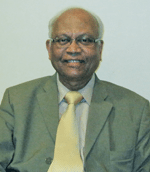While talking about Indian innovations and innovators, R.A. Mashelkar, former director general of Council of Scientific & Industrial Research (CSIR) and chairman of National Innovation Foundation and Marico Innovation Foundation, tells Shweta Dhadiwal Baid of EFY Bureau that there is a missing link between knowledge and wealth. If we own some knowledge, we should be able to create wealth out of it within the country, for it to become a successful innovation!

MAY 2011: Q. According to you, what does innovation mean?
A. Innovation is successful exploitation of a new idea. Here the key words are new idea, exploitation and successful. A ‘new idea’ is something that could be new to India or to the world.
‘Exploitation’ means its practical use in society and industry. It doesn’t mean demonstration. Demonstration is just proving in the lab, but here you are talking about actual utilisation.
‘Success’ itself has three key characteristics: Speed, scale and sustainability. If you don’t do it with speed, your competitors will overtake you and you will be out of business. You have to innovate for a large number of people, i.e., at a large scale. In a country like India, where there are a billion of people, it has to have mass effect. Finally, you can enter the market but if your product is displaced by others, there is no use of such innovation. If you look at the list of Fortune 500 companies, today, it has changed from what it was 25 years ago. This is because companies didn’t prove sustainable.
Q. What are your views on innovations in India?
A. India has been great in generating new ideas. These ideas have been able to create a lot of wealth in other countries but not in India. We have not been able to successfully convert the Indian ideas into something which is useful and practical. Take the example of Raman Effect. C.V. Raman won a Nobel Prize for it, but the Raman scanner based on this scientific discovery was not developed in India.
Innovation is all about doing things differently. India has been involved in innovating from grass-root level up to high-tech developments. But Indian innovations demonstrate a peculiar characteristic. For example, General Motors would have never thought of a sub-$2000 car, but Tata Motors thought of and it was a remarkable innovation. India had scarcity, but it also had aspiration. This combination of scarcity and aspiration led to a number of innovations.
The enterprises here are looking for ‘more from less for more.’ That is, you try to be very efficient, very productive by using few resources. It’s not just for more profit, but for more people, for masses.
Q. Where does India stand with respect to the rest of the world in creating innovations?
A. It depends on what type of metrics you are using. We do not have a Samsung, LG or Nokia innovating in India, yet we have the largest number of mobile phone users in India. We are able to offer the cheapest plan and cheapest handset here, and yet make this business profitable. We do not have these technological innovations, but we have a business process innovation.
Similarly, take the example of Arvind Eye Care hospital. They do cataract eye surgery for only $30 against $3000 in the US. The doctors at this hospital perform 300,000 surgeries a year while maintaining the quality. The founder of the hospital was inspired by the McDonald’s service efficiency and ensured the same at his hospital through the assembly line approach. This is work-flow innovation.
You have to enhance your metrics in order to understand innovation in the Indian context. If you evaluate by patents per capita or start-ups per capita, the population is so large that anything divided by a billion will give you a ‘zero,’ which is a wrong indicator. You have to relook at the innovations with a new concept and new model.
You have to enhance your metrics in order to understand innovation in the Indian context. If you evaluate by patents per capita or start-ups per capita, the population is so large that anything divided by a billion will give you a ‘zero,’ which is a wrong indicator
Q. What is your take on technological innovations in India?
A. Today, if you look at any application—aerospace, defence, nanotechnology, biotechnology or automotive industry—you see developments all around.
We developed technologies under the condition of denial. We made our own supercomputer, aircraft and nuclear reactor when we did not have access to all these technologies from other countries.
I would like to quote the example of Saras—a 14-seater light transport aircraft project. It required around 15,000 components, of which only one component, that is the starter generator, was on the dual-use list. Due to some policies, this single component was denied to us by the US, leading to 18-month delay in the project. When Cray Supercomputer was denied to us, we developed our own Param Supercomputer. When Cryogenic engine was denied to Indian Space Research Organisation, they developed their own. So denial-driven innovation is not new to us.










